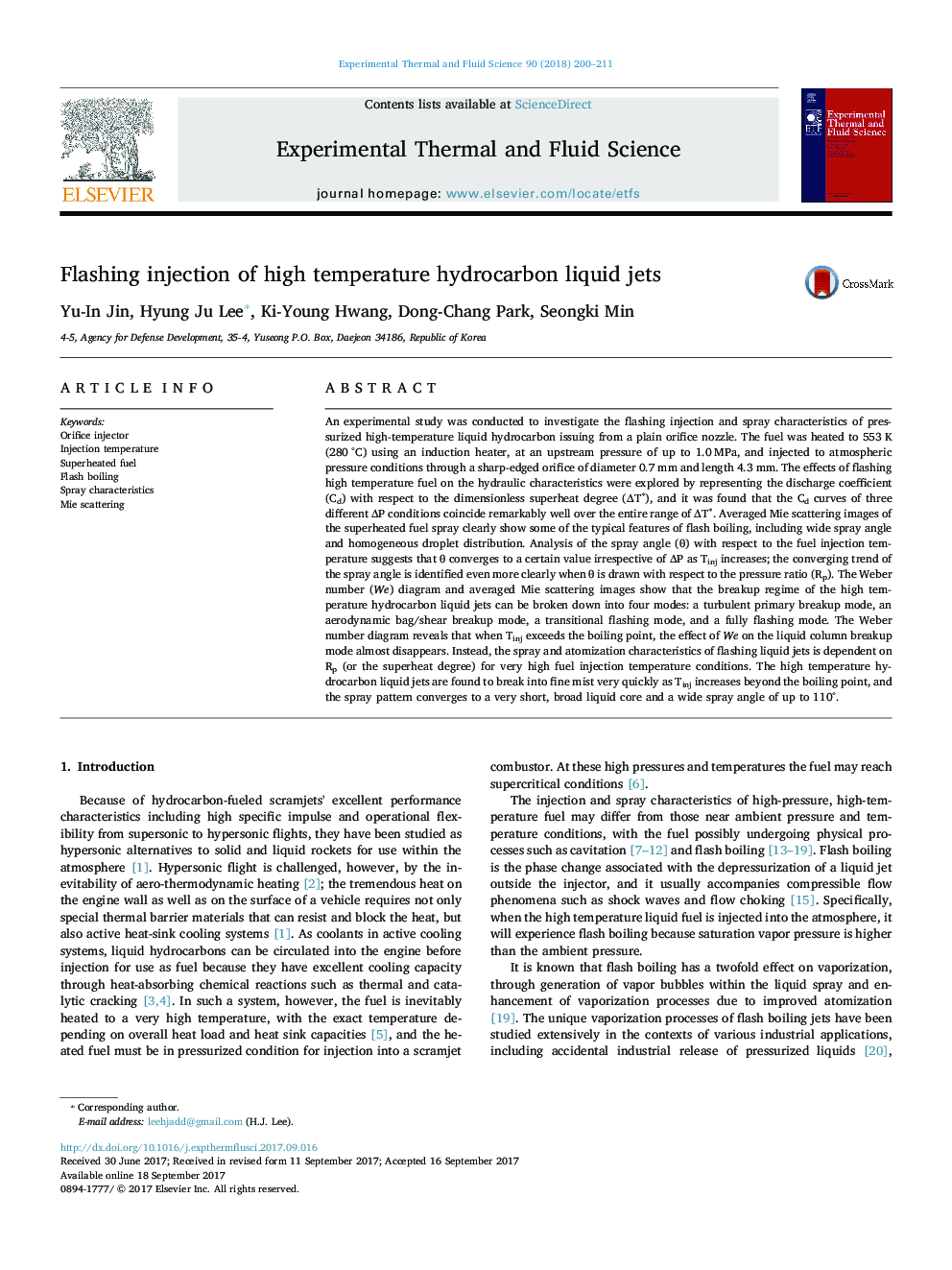| کد مقاله | کد نشریه | سال انتشار | مقاله انگلیسی | نسخه تمام متن |
|---|---|---|---|---|
| 4992435 | 1457386 | 2018 | 12 صفحه PDF | دانلود رایگان |
- Flashing injection of pressurized high temperature hydrocarbon fuel was studied experimentally.
- Variation in the discharge coefficient showed a clear dependence on the dimensionless superheat degree.
- Spray angle of averaged Mie scattering images approached to a constant in the superheated region.
- Breakup regime of the high temperature hydrocarbon liquid jets broke down into four modes.
- The spray and atomization characteristics of flashing liquid jets is dependent on the pressure ratio, Rp.
An experimental study was conducted to investigate the flashing injection and spray characteristics of pressurized high-temperature liquid hydrocarbon issuing from a plain orifice nozzle. The fuel was heated to 553 K (280 °C) using an induction heater, at an upstream pressure of up to 1.0 MPa, and injected to atmospheric pressure conditions through a sharp-edged orifice of diameter 0.7 mm and length 4.3 mm. The effects of flashing high temperature fuel on the hydraulic characteristics were explored by representing the discharge coefficient (Cd) with respect to the dimensionless superheat degree (ÎTâ), and it was found that the Cd curves of three different ÎP conditions coincide remarkably well over the entire range of ÎTâ. Averaged Mie scattering images of the superheated fuel spray clearly show some of the typical features of flash boiling, including wide spray angle and homogeneous droplet distribution. Analysis of the spray angle (θ) with respect to the fuel injection temperature suggests that θ converges to a certain value irrespective of ÎP as Tinj increases; the converging trend of the spray angle is identified even more clearly when θ is drawn with respect to the pressure ratio (Rp). The Weber number (We) diagram and averaged Mie scattering images show that the breakup regime of the high temperature hydrocarbon liquid jets can be broken down into four modes: a turbulent primary breakup mode, an aerodynamic bag/shear breakup mode, a transitional flashing mode, and a fully flashing mode. The Weber number diagram reveals that when Tinj exceeds the boiling point, the effect of We on the liquid column breakup mode almost disappears. Instead, the spray and atomization characteristics of flashing liquid jets is dependent on Rp (or the superheat degree) for very high fuel injection temperature conditions. The high temperature hydrocarbon liquid jets are found to break into fine mist very quickly as Tinj increases beyond the boiling point, and the spray pattern converges to a very short, broad liquid core and a wide spray angle of up to 110°.
Journal: Experimental Thermal and Fluid Science - Volume 90, January 2018, Pages 200-211
